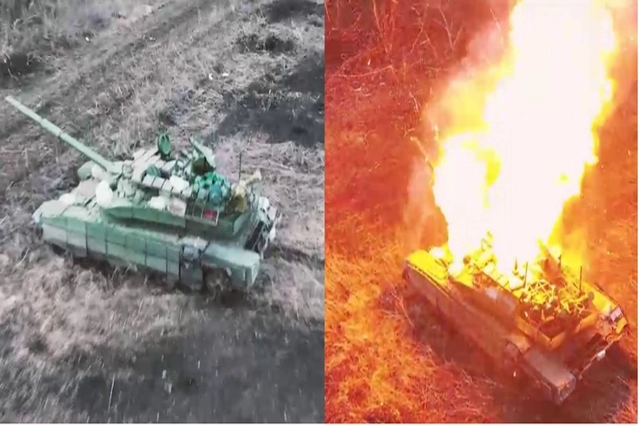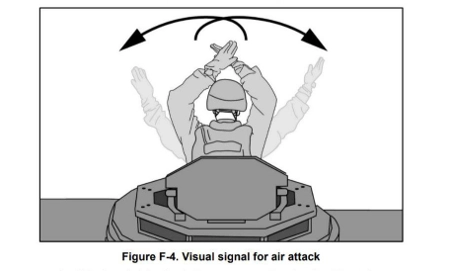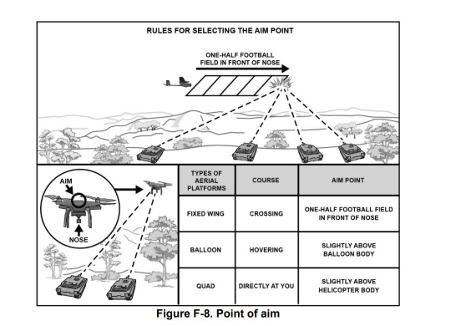As US armored forces seek technological solutions to protect them from drones, the interim solution suggested
by its military planners suggests ignorance of the realities of the battlefield.
by Steve Brown

With all but four of the 31 M1A1 Abrams main battle tanks gifted by the US to Ukraine in September 2023 having been destroyed, the majority by Russian kamikaze drones striking the weaker armor on top of the tank as Kyiv Post reported previously the Pentagon has somewhat belatedly woken up to the threat and will now seek to identify and provide countermeasures for its tanks.The US Army’s Procurement of Weapons and Tracked Combat Vehicles (W&TCV, Army) report for 2026 includes an allocation of more than $107 million for survivability improvements to almost 400 of its M1 Abrams fleet as an initial measure.It is anticipated that in the medium term, armor upgrades will include beefing up the armor on the upper parts and other vulnerable areas of the tanks with the use of so-called cope cages and possibly explosive reactive armor. In the long term, its armored vehicles would hope to see the addition of active protection systems (APS) – equipment such as Israel’s Trophy, which can detect and intercept incoming drones, as well as electronic warfare capabilities that would jam the drone’s communications and navigation mechanisms.
Army Techniques Publications
Anticipating these technological solutions will take some time. The US Department of the Army has issued updated versions of two key “Army Techniques Publication (ATP)” documents, which are intended to address the drone threat:
ATP 3-01.81 – Counter-Unmanned Aircraft System (C-UAS) Operations. The update was published in May and lays down in great detail over more than 100 pages everything the US army thinks it knows about the threats posed by drones on the modern battlefield defining who, what, when, and how to deal with them.This month, a new version of ATP 3-20.15, which lays down procedures for all aspects of the operation and command of the tank platoon, contains a section that lays down C-UAS drills for protecting tanks individually and collectively from drone attacks.
It is this latter publication that has caused amusement among milbloggers who accuse those responsible for drafting the procedures of having no comprehension of the realities of the battlefield.
Military informant
The Russian milblogger Военный Осведомитель (Military Informant) is typically scathing of the advice given, describing it as an “example of how the US Army, which has never personally encountered first-person-view (FPV) drones, has tried to remotely comprehend a new threat to itself through recommendations,” adding that the solutions they are advocating “… is simply non-working nonsense.”
He summarizes the procedure in the event of an enemy unmanned aerial vehicle (UAV) being detected on the march as follows:
*The platoon commander sticks out of the vehicle hatch and signals to the other crews of the presence of drones “by waving his hands about.”
*At this point, the remaining tank crews should close down their hatches, while the platoon commander continues to observe from his open hatch.
*The platoon commander relays the information to a higher formation while ordering the platoon to form a “herringbone” defensive formation pattern.

Detail from the ATP 3-20.15 C-UAS section – designating how the platoon commander should indicate an aerial attack.
The blogger then says the manual lays down guidance on how the tanks should engage the drone using its 120mm main armament using M1028 canister rounds and its co-axial machine guns. He then questions the sanity of whoever compiled the ATP before ripping into the basis for the instructions, illustrating what is wrong in specific areas:
Target size – FPV drones which are the greatest battlefield threat to armored vehicles, are small and fast-moving, with the chances of spotting one before it is on you being unlikely without some automated attack warning device in place.
Reaction time – the time between spotting the drone, even if you can, and the UAV striking its target, based on the evidence seen on the Ukrainian battlefield, is likely to be only a few seconds – giving no time to convey, receive, and react to hand signals.
Aiming time – hoping that the tank’s guns are pointing in the right direction and will be able to hit a fast-moving target approaching from any direction is “nothing more than a fantasy – shooting sparrows with a cannon.”

Detail from the ATP 3-20.15 C-UAS section – how to engage a drone using the tank’s main armament.
Minefields – defensive drone attacks in Ukraine are invariably carried out in mined areas, which would force dispersing vehicles onto detonating anti-tank landmines.Military Informant contends that the procedures would only work if the tank platoon was attacked in open, previously reconnoitered terrain, being attacked by a single slow-moving drone, detected as it advances from a distance.The blogger points out the reality is attacks are conducted by swarms, sometimes consisting of dozens of FPV drones, attacking simultaneously from multiple directions as the armored vehicles are negotiating rough terrain through minefields often covered by other weapons such as artillery or anti-tank guided weapons.This, more than anything, is the reason why both sides in the war in Ukraine have all but abandoned assaults using tank and armored vehicles – they are a “sitting target” for the ubiquitous kamikaze UAVs that continuously patrol the battlefield.